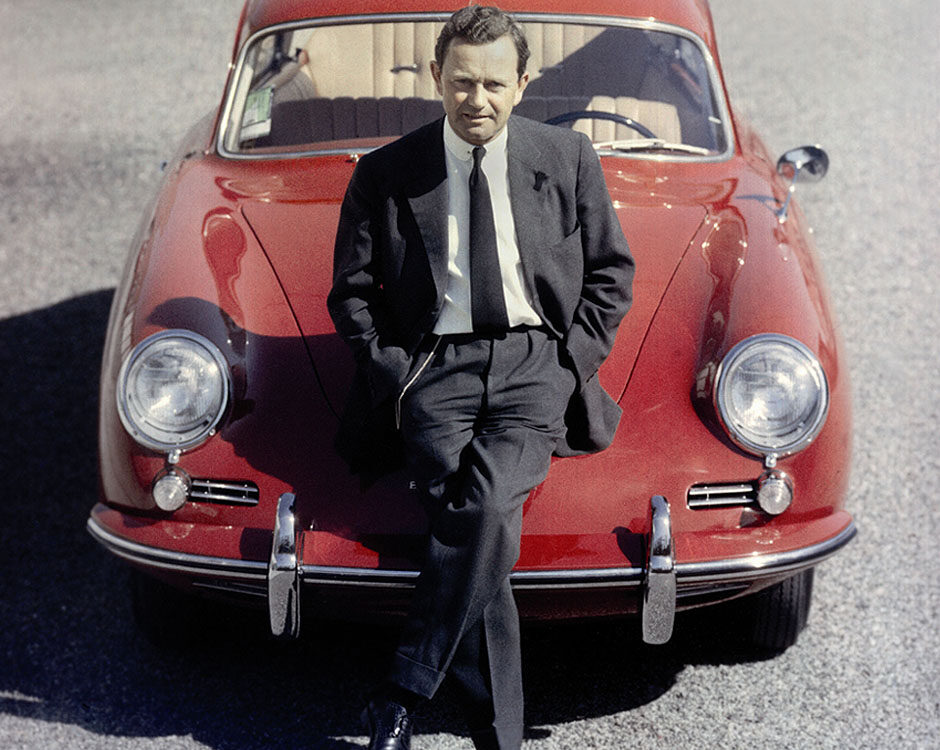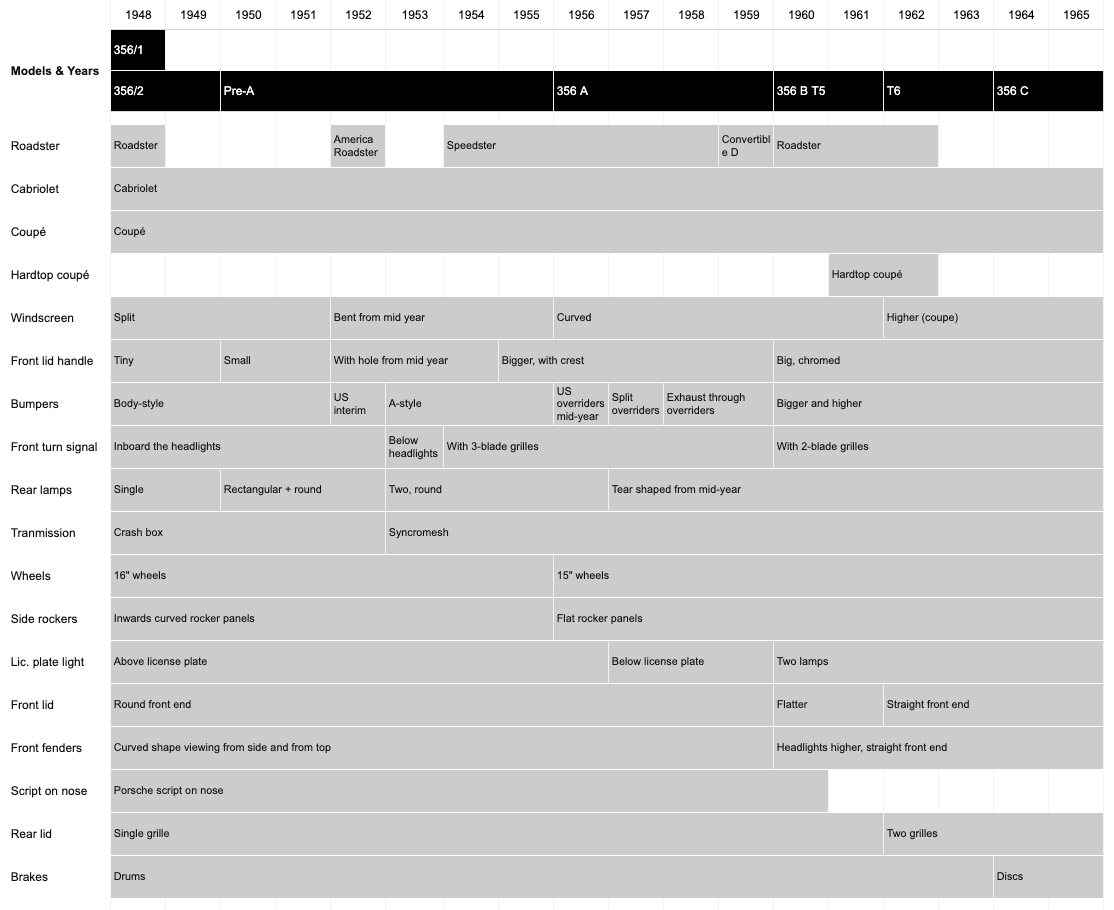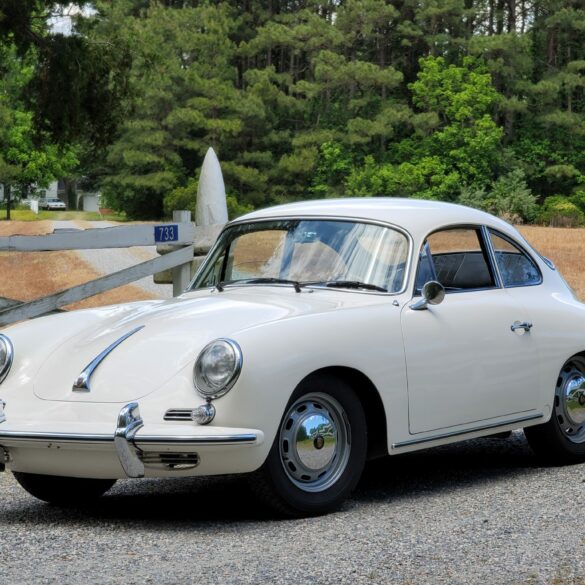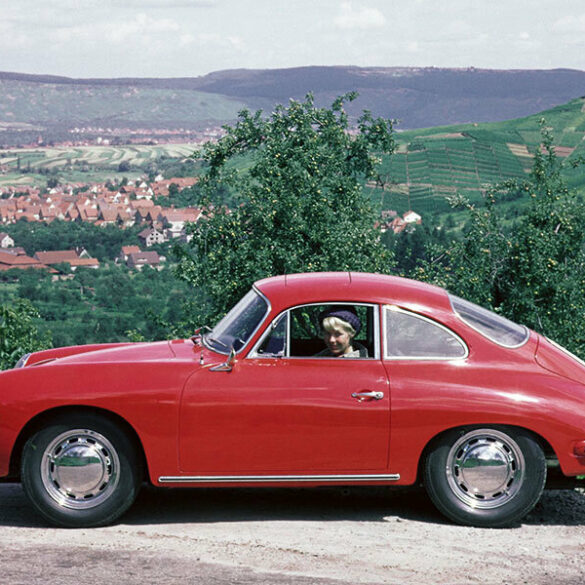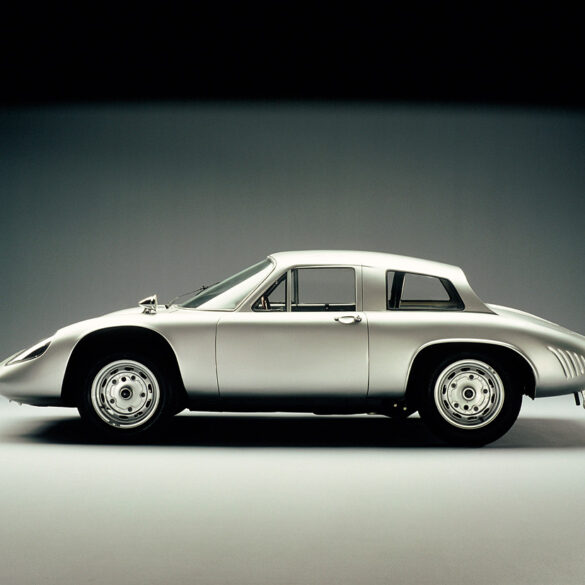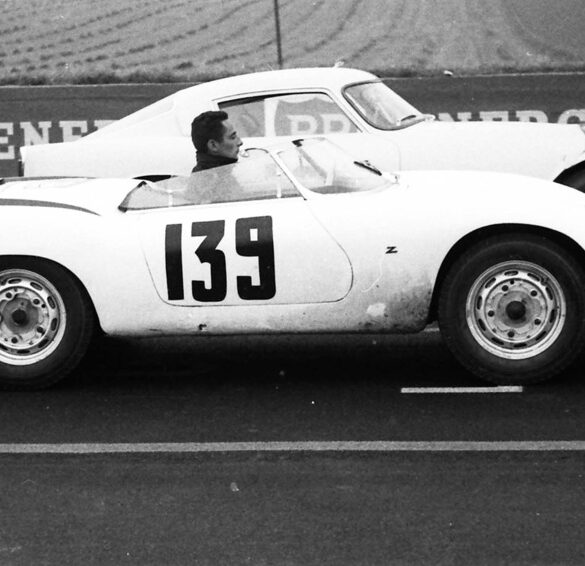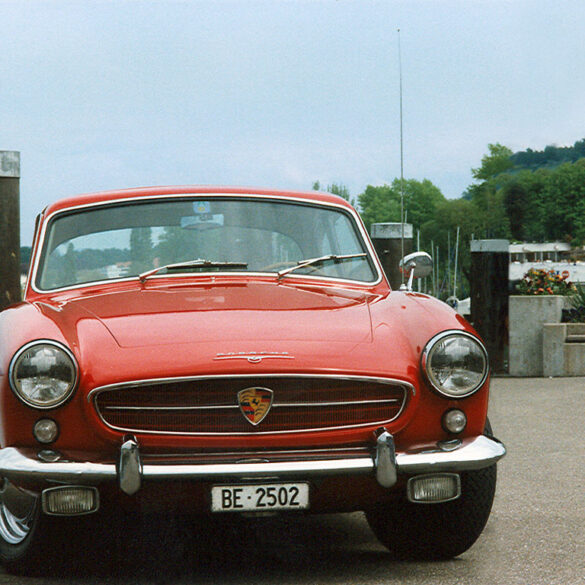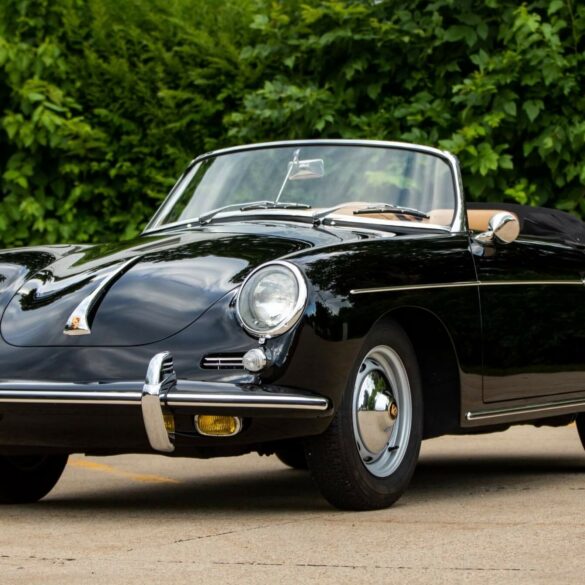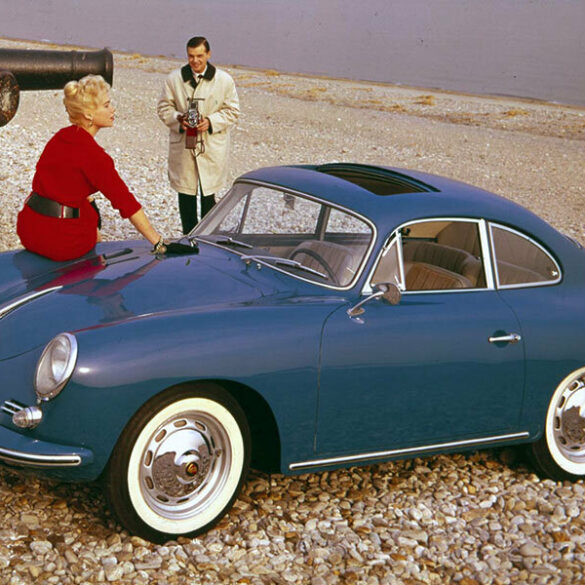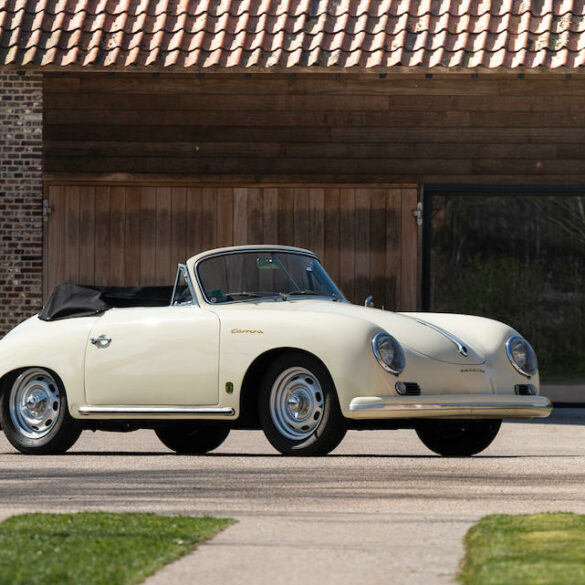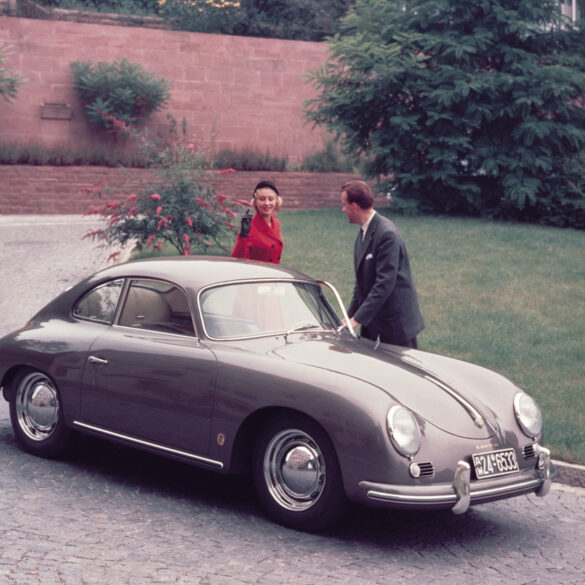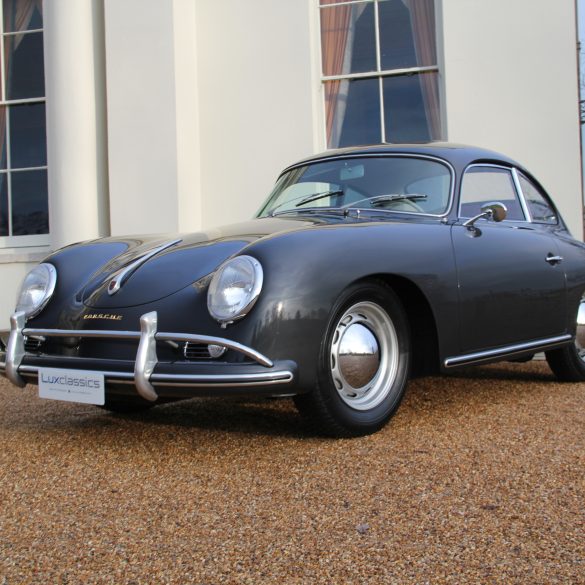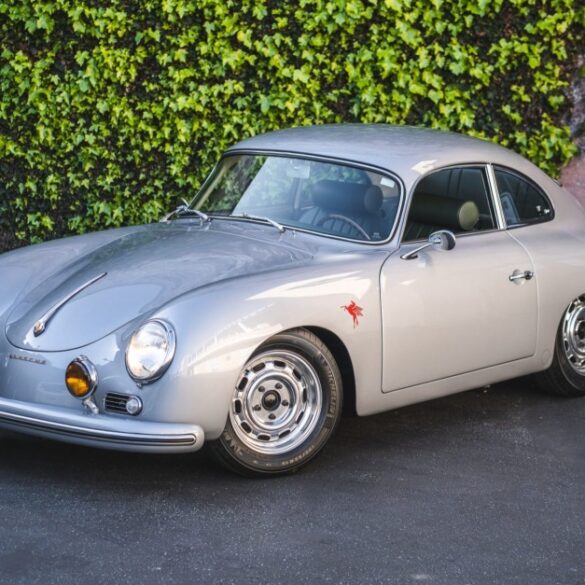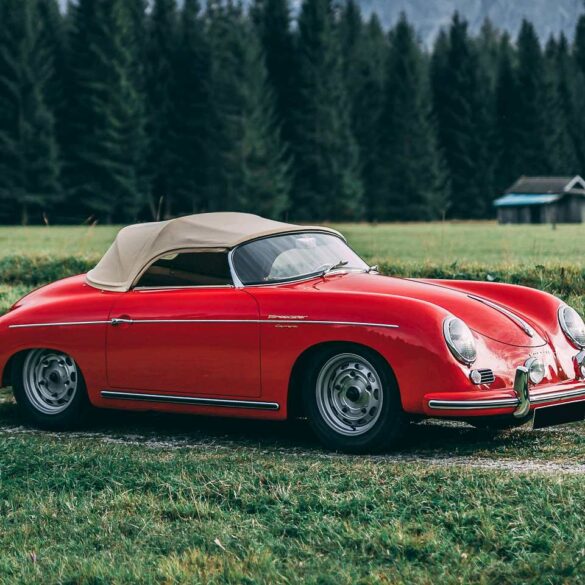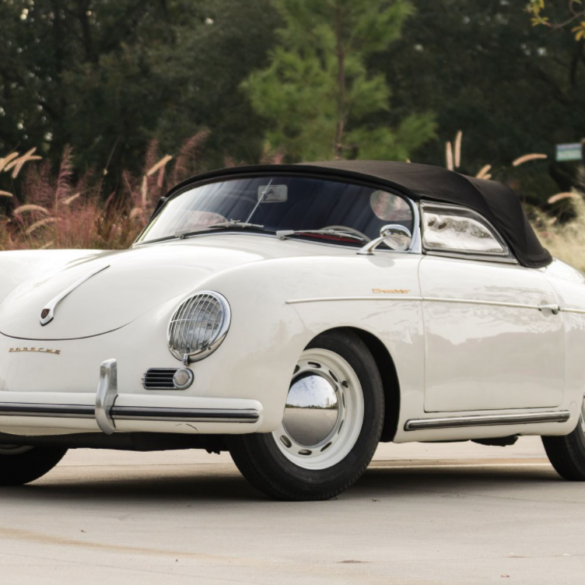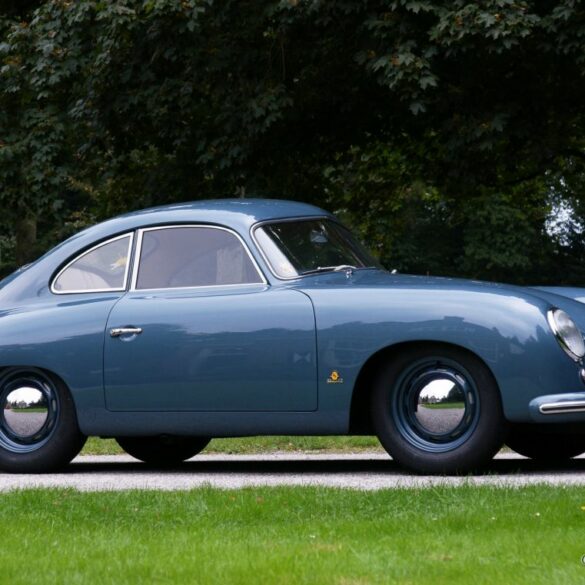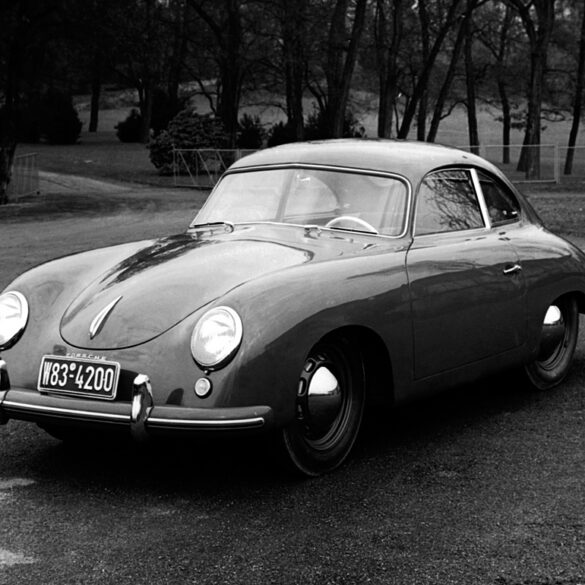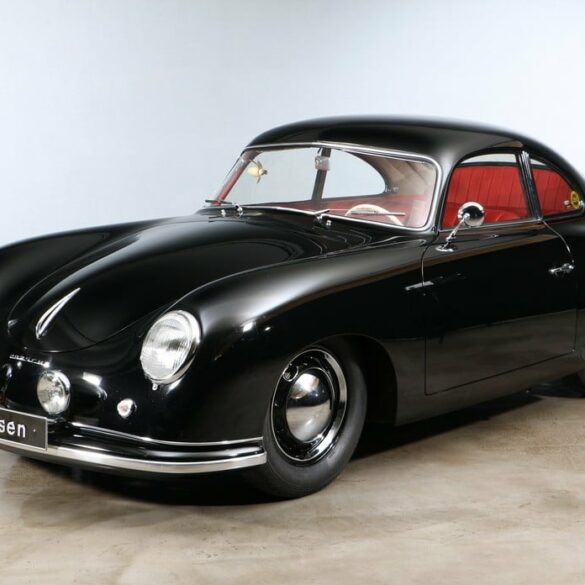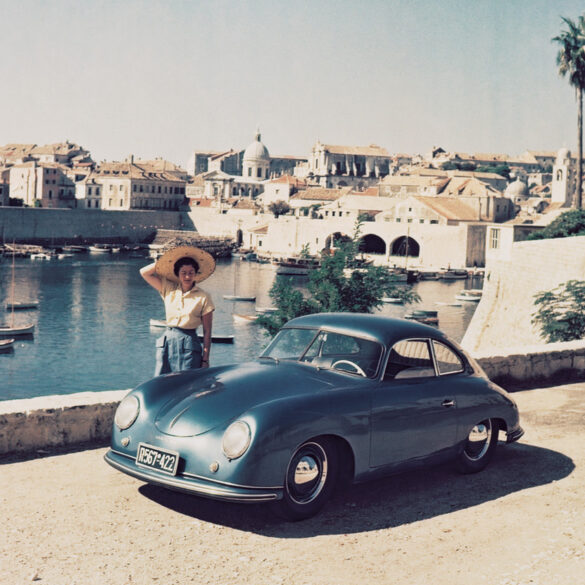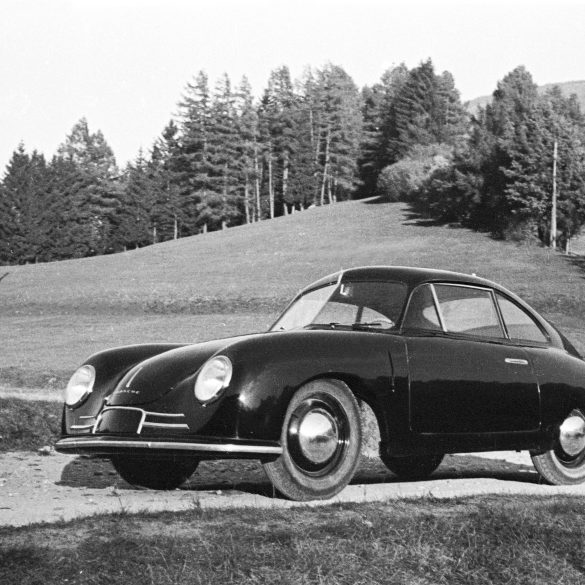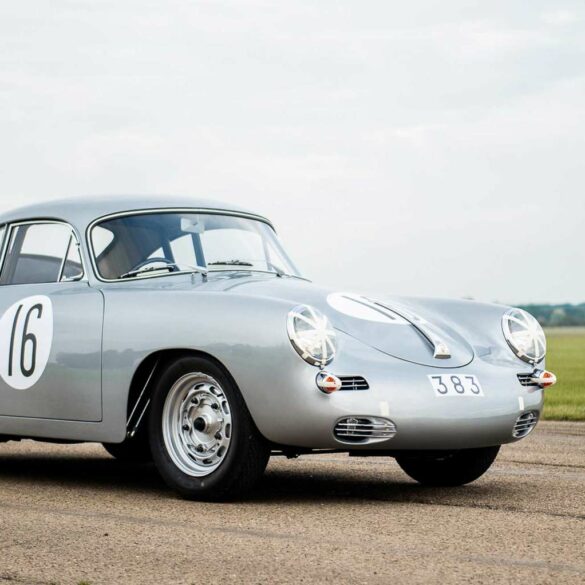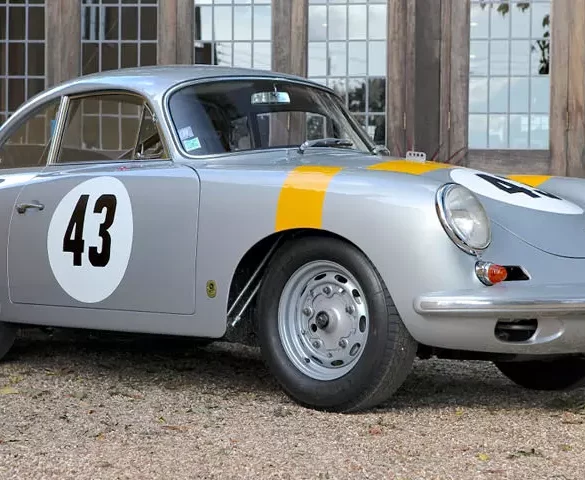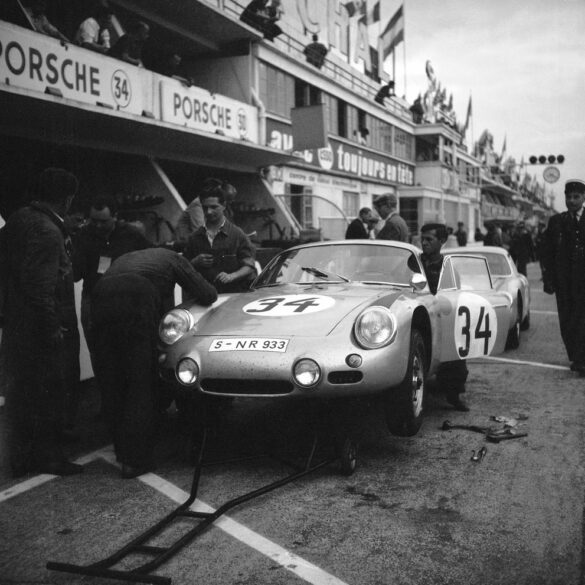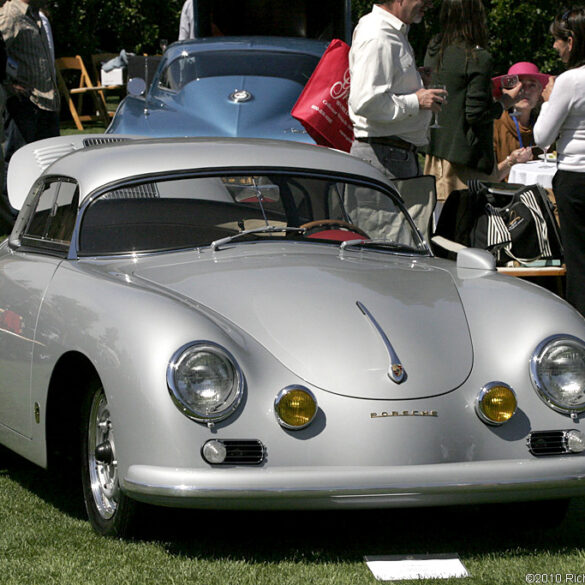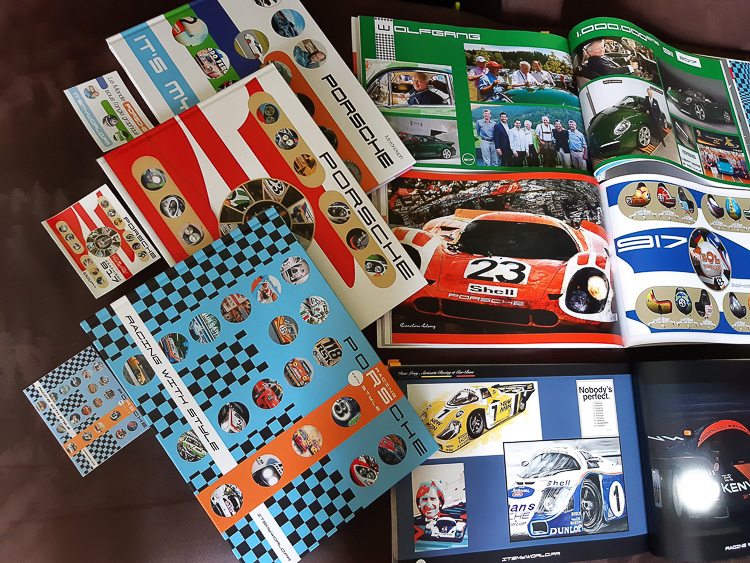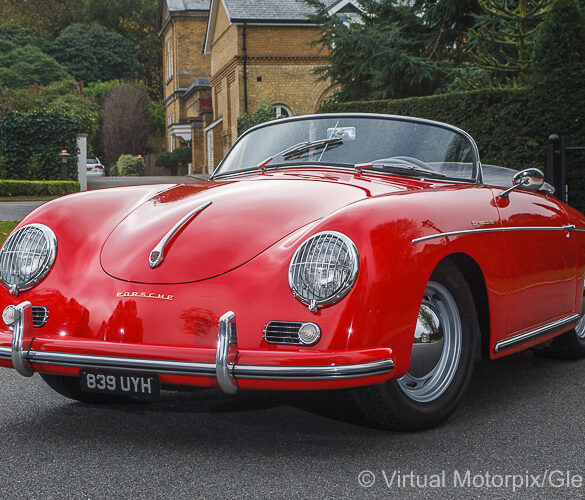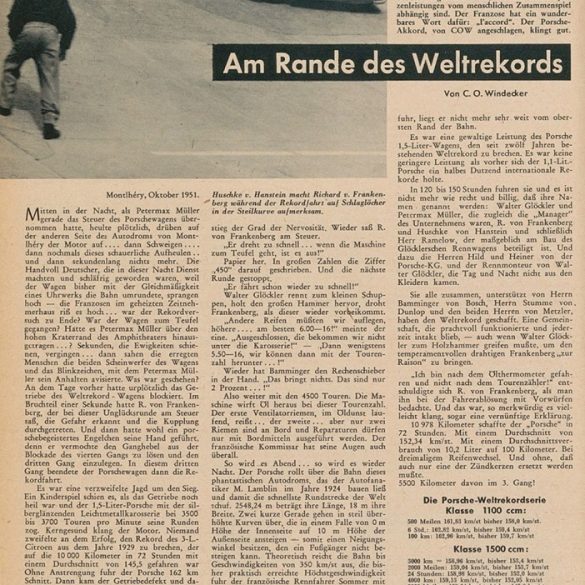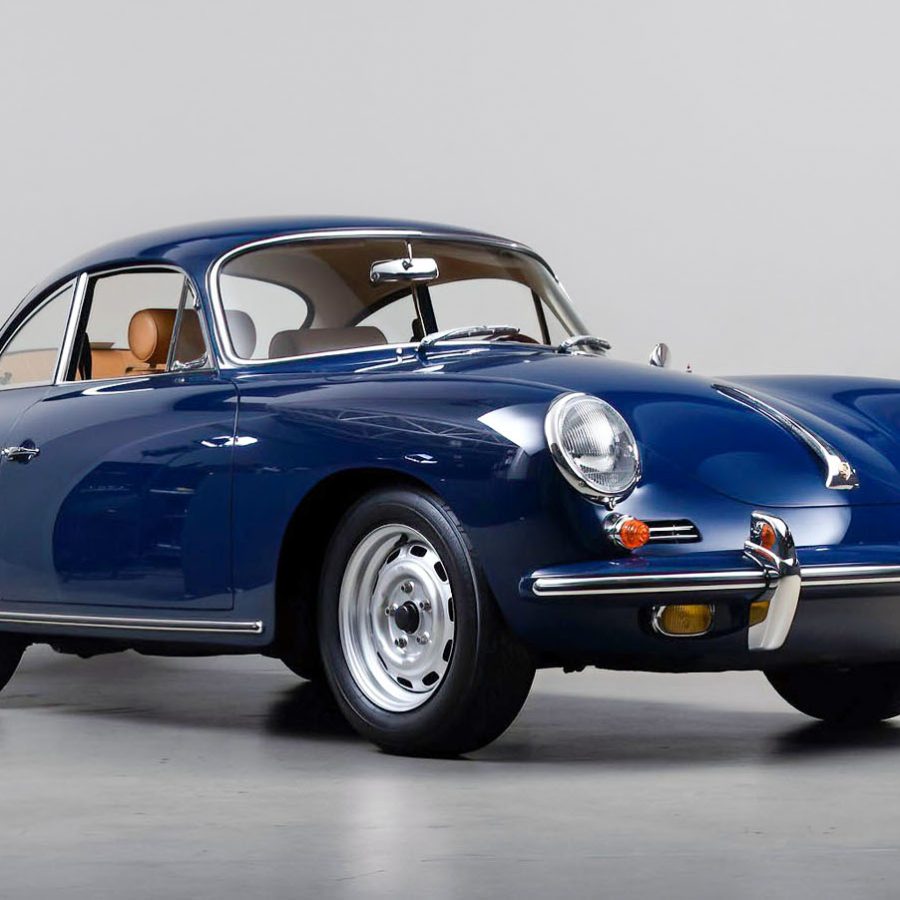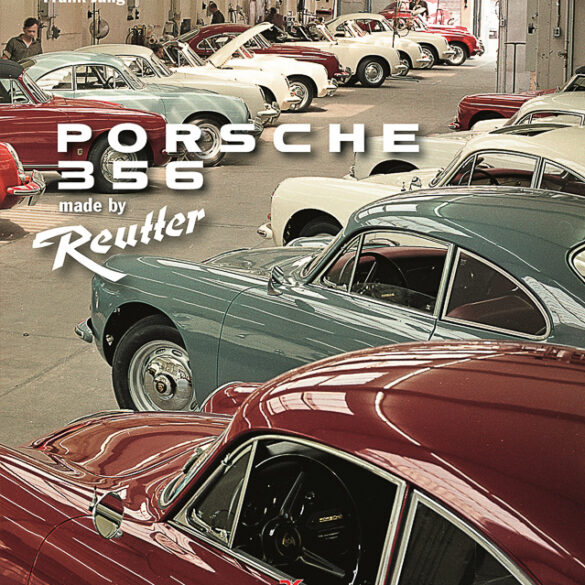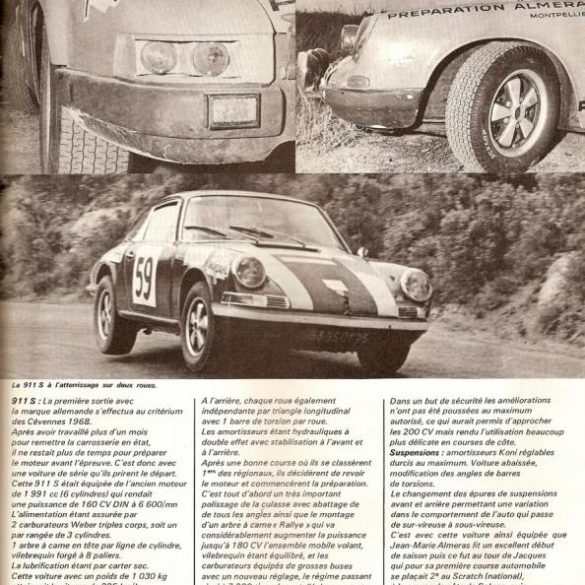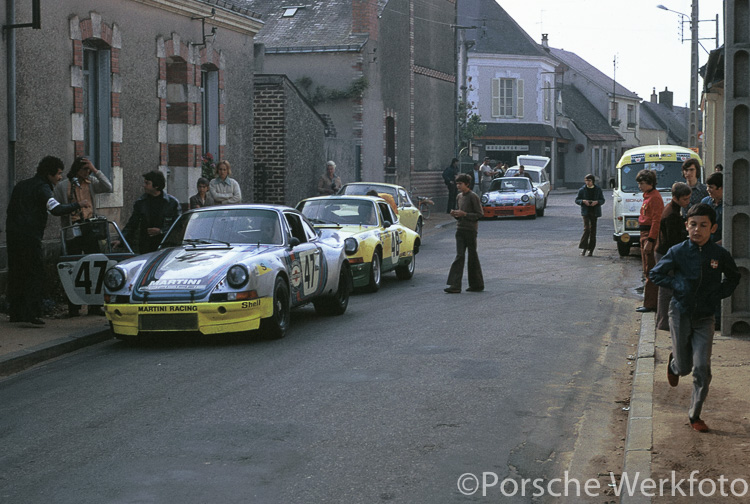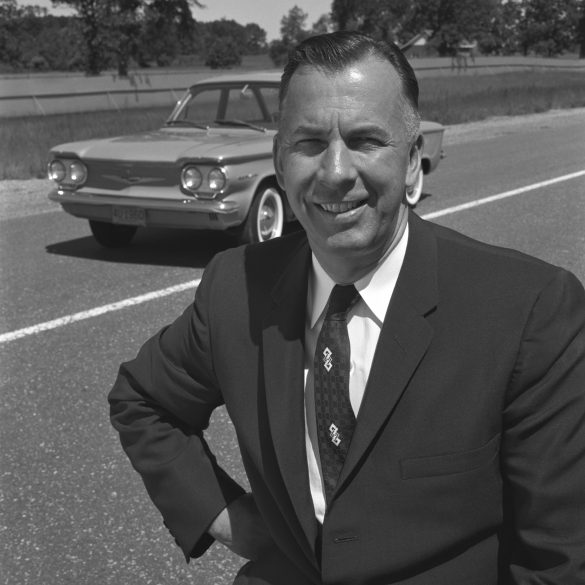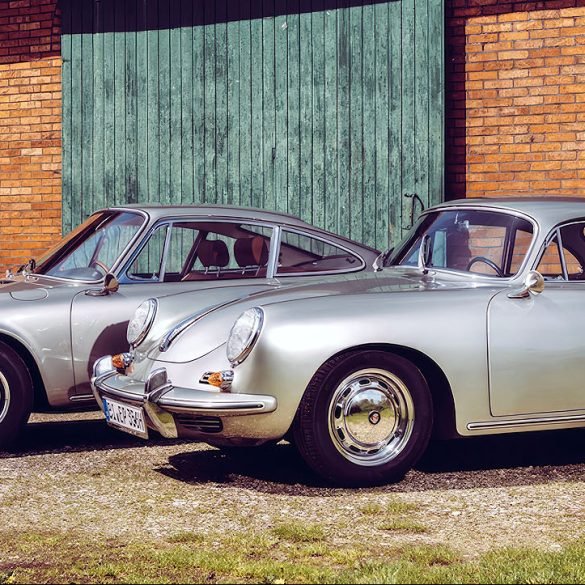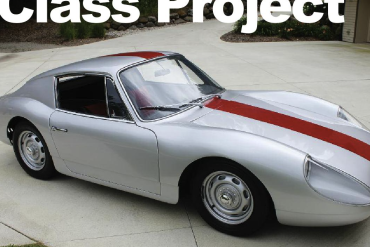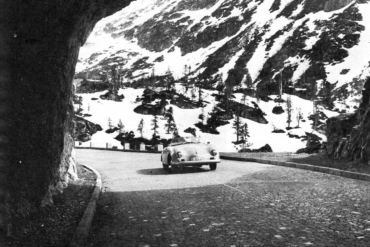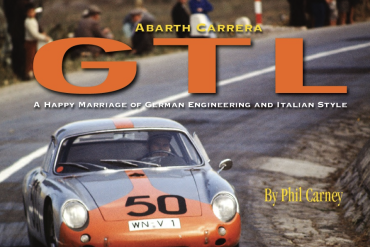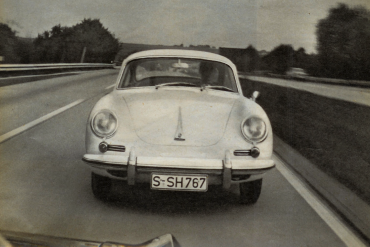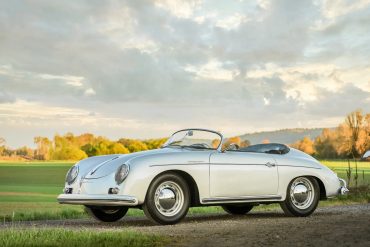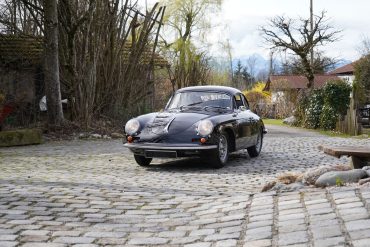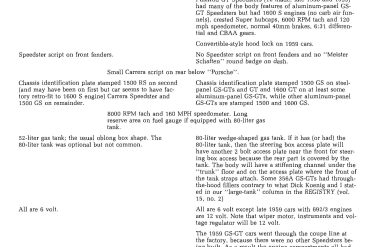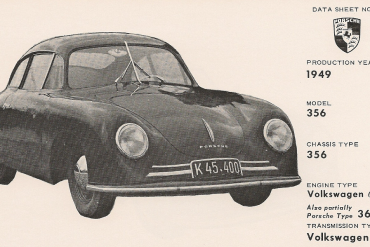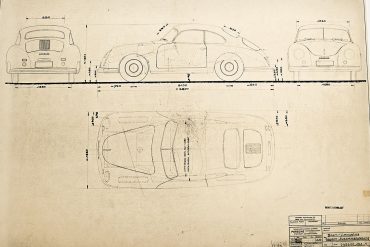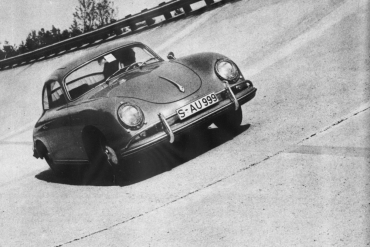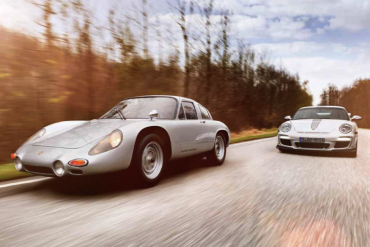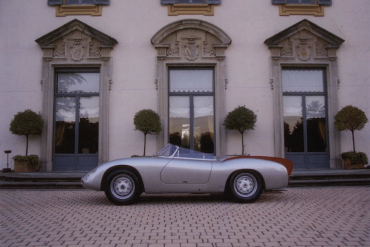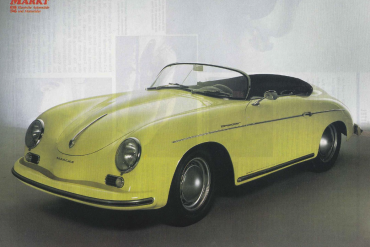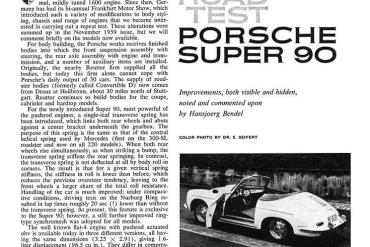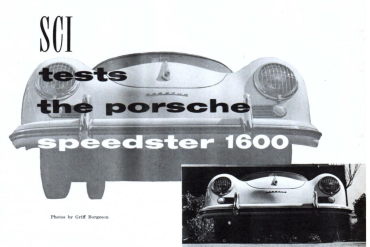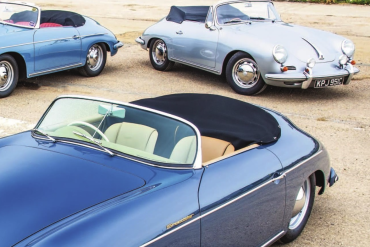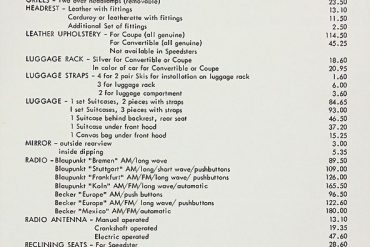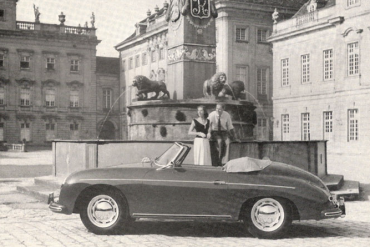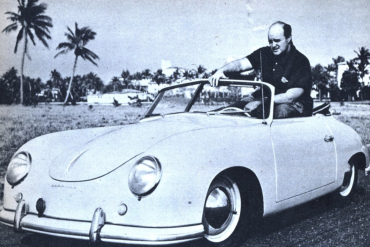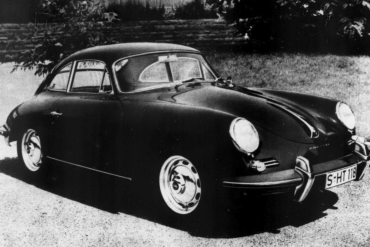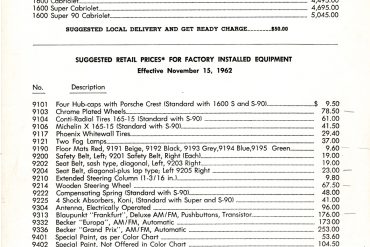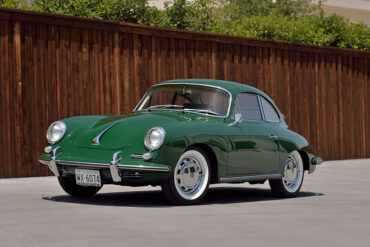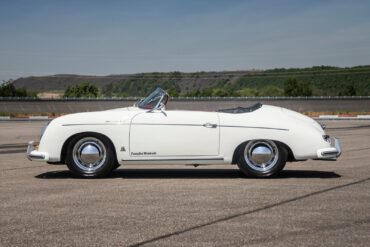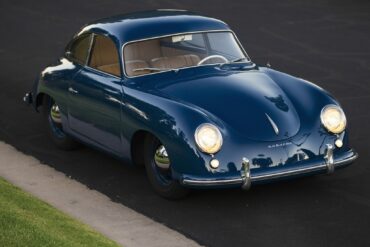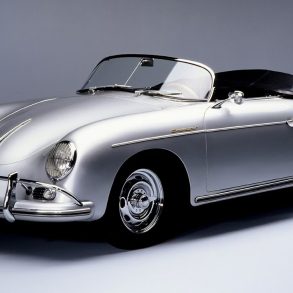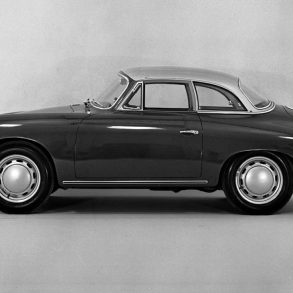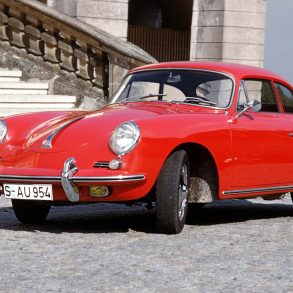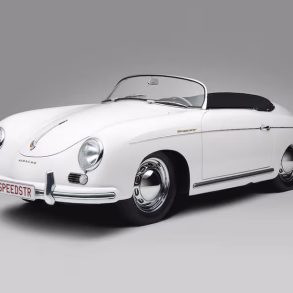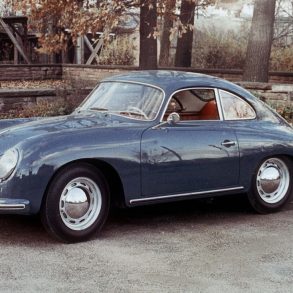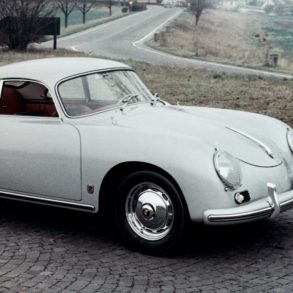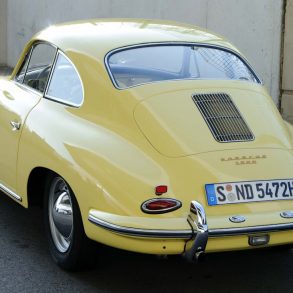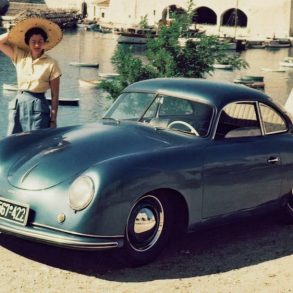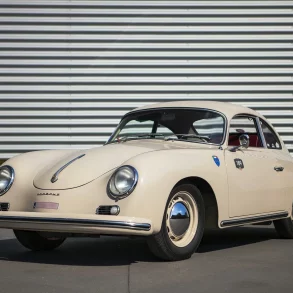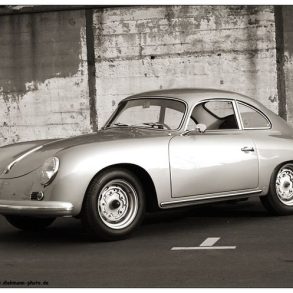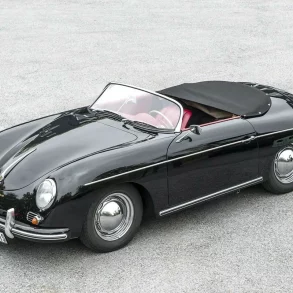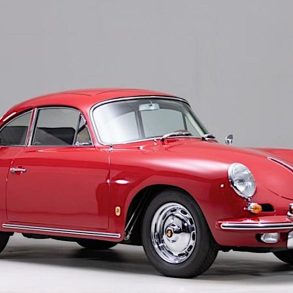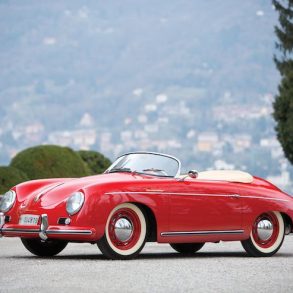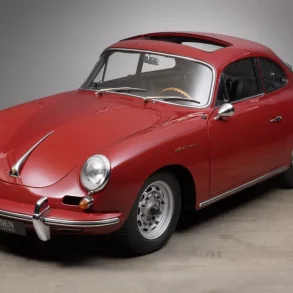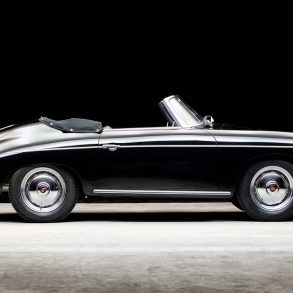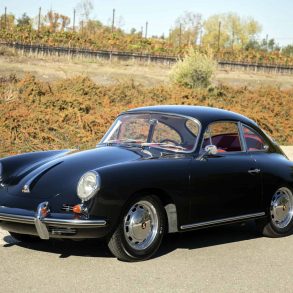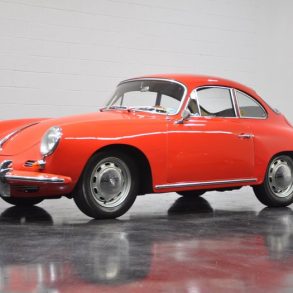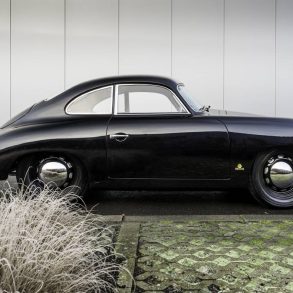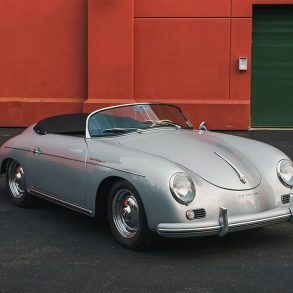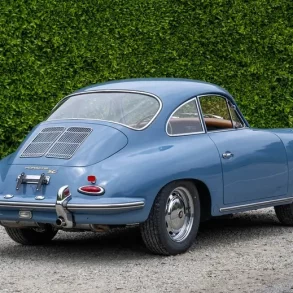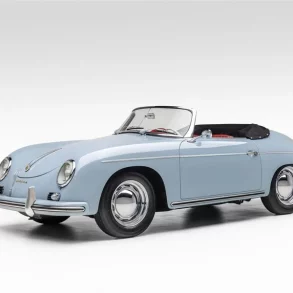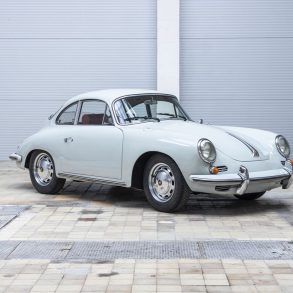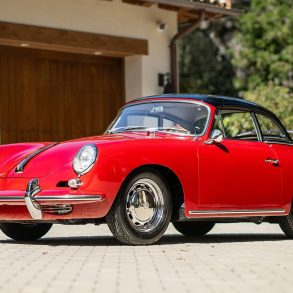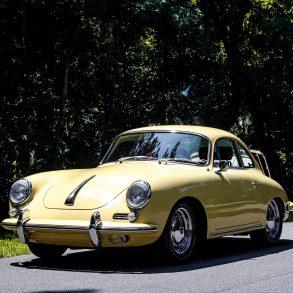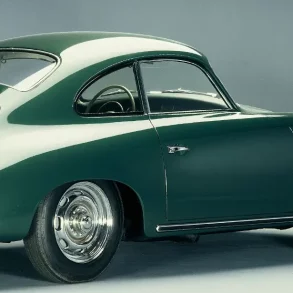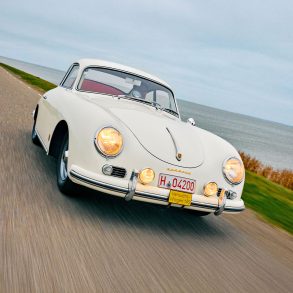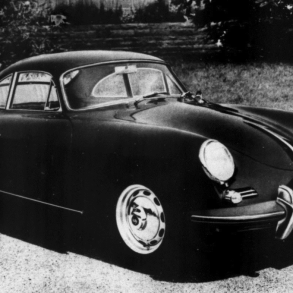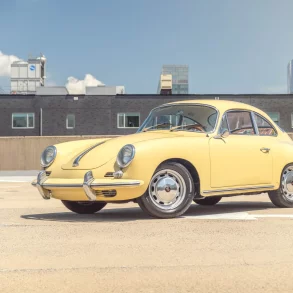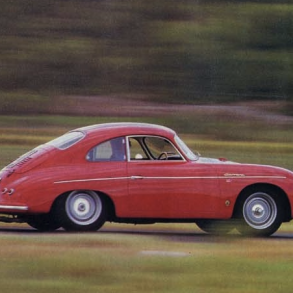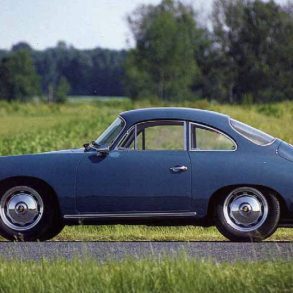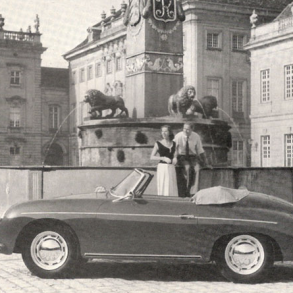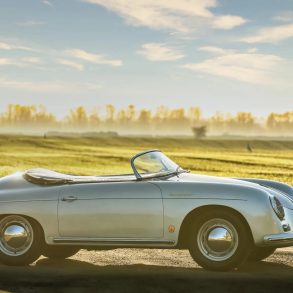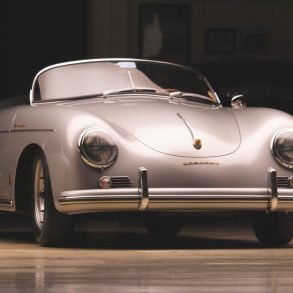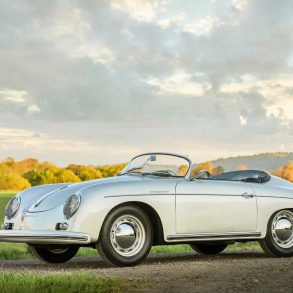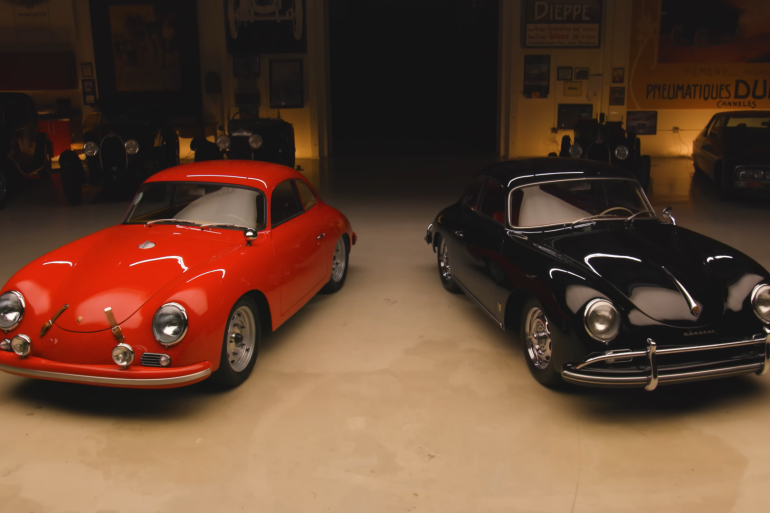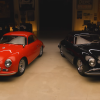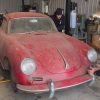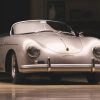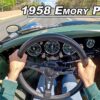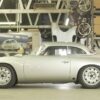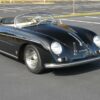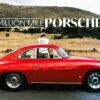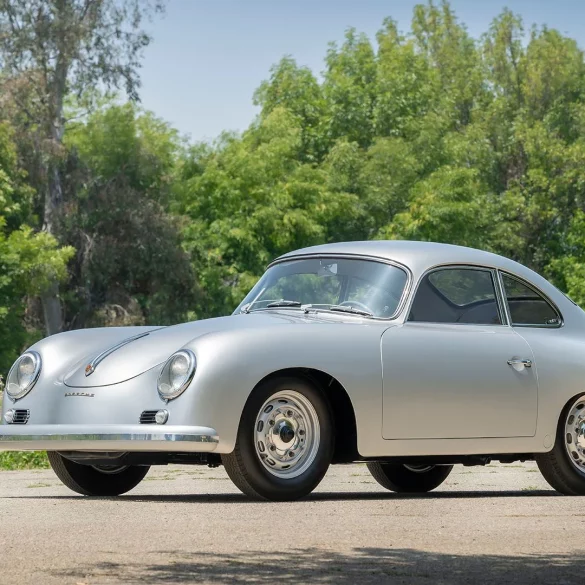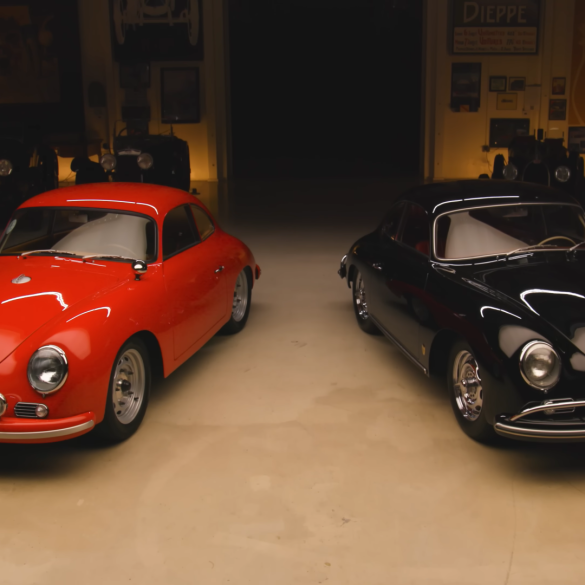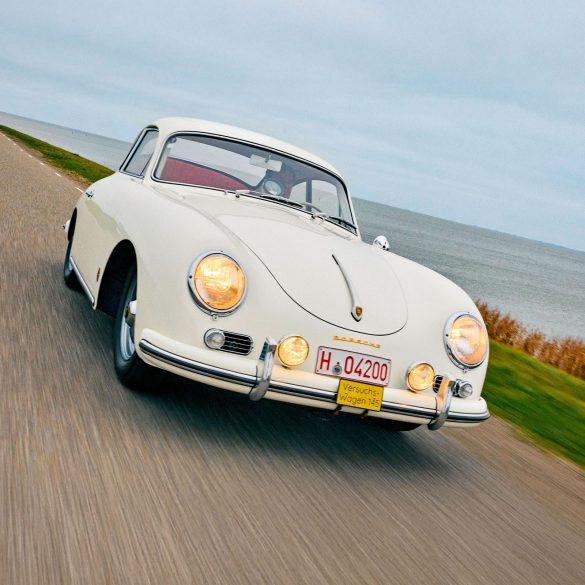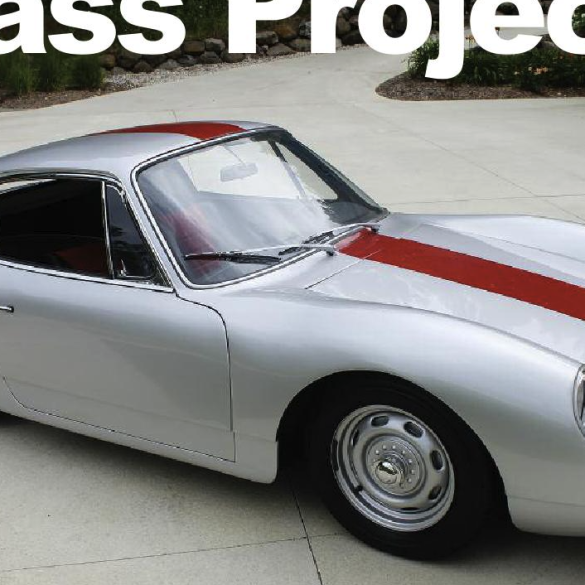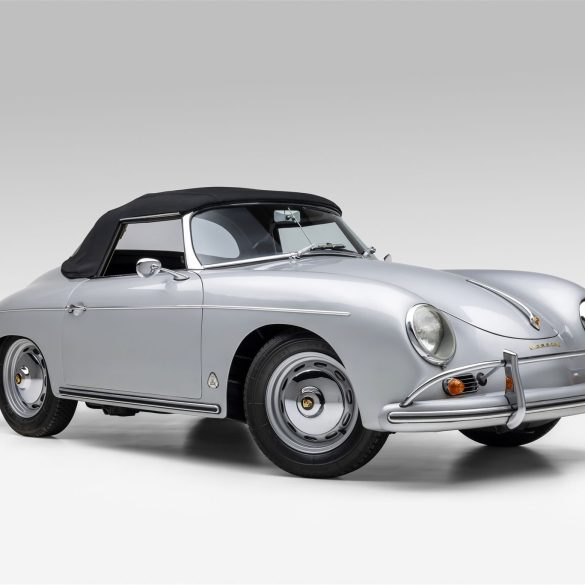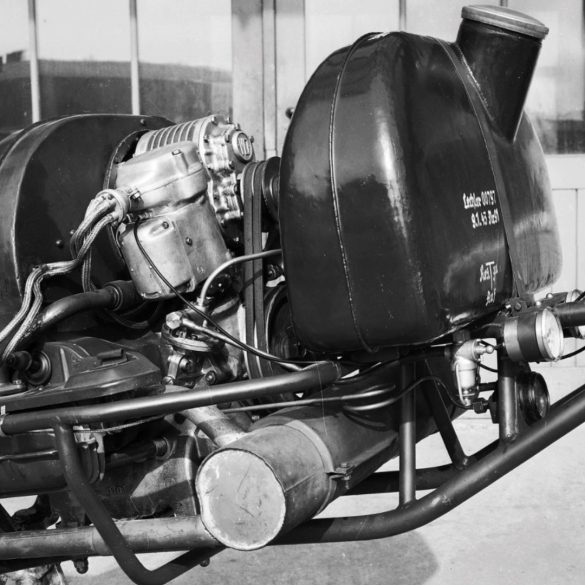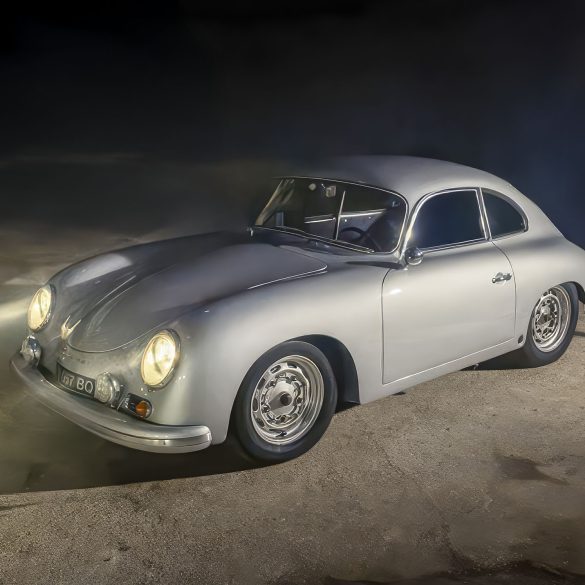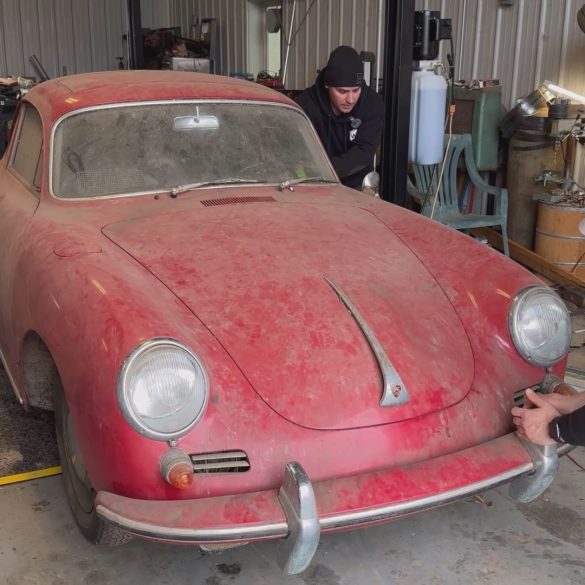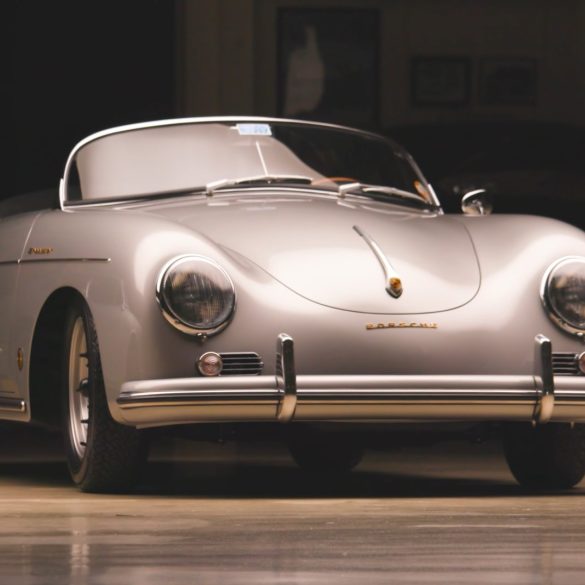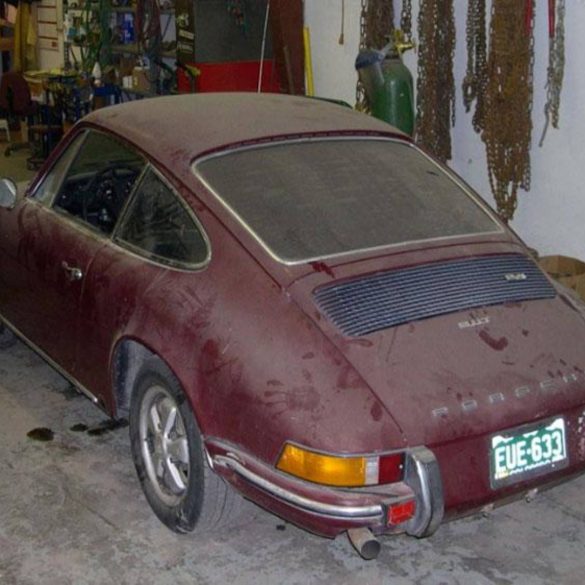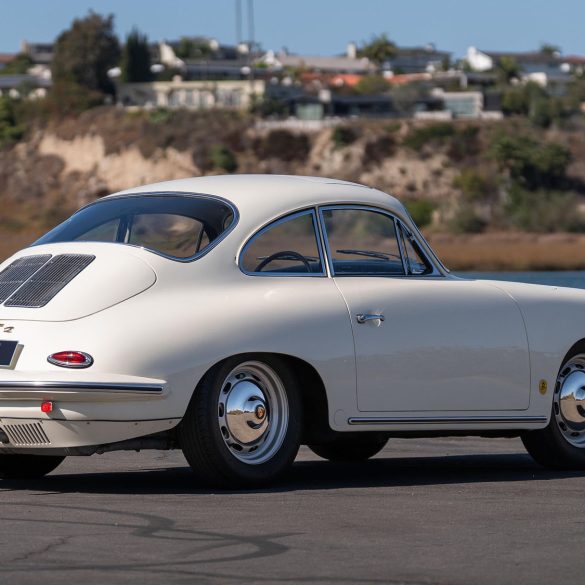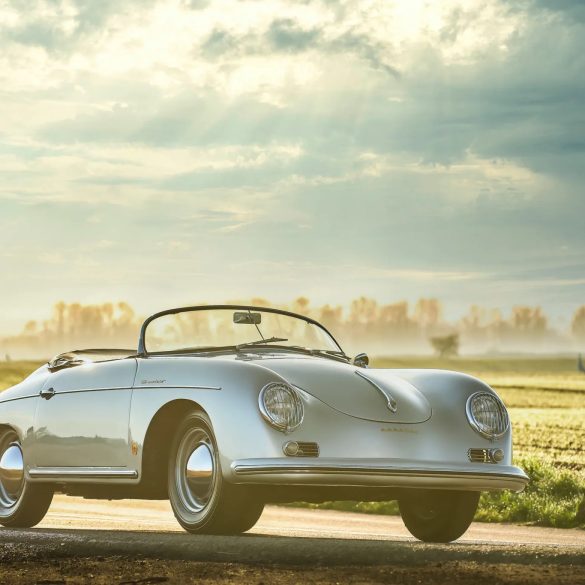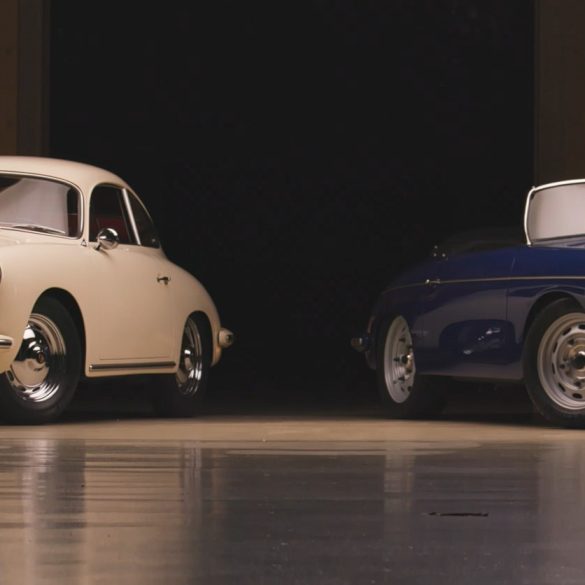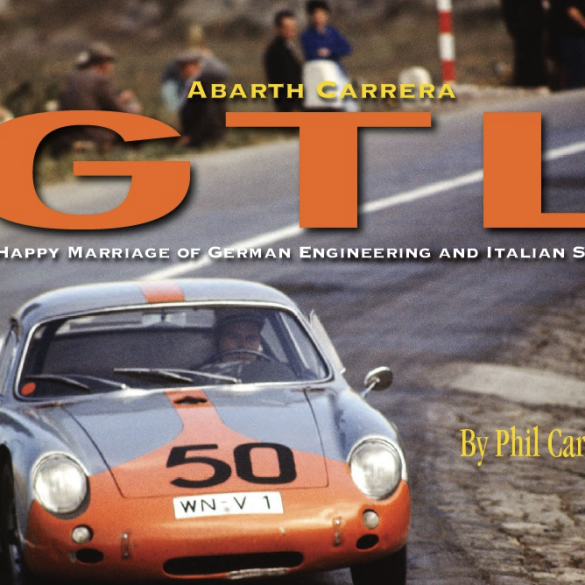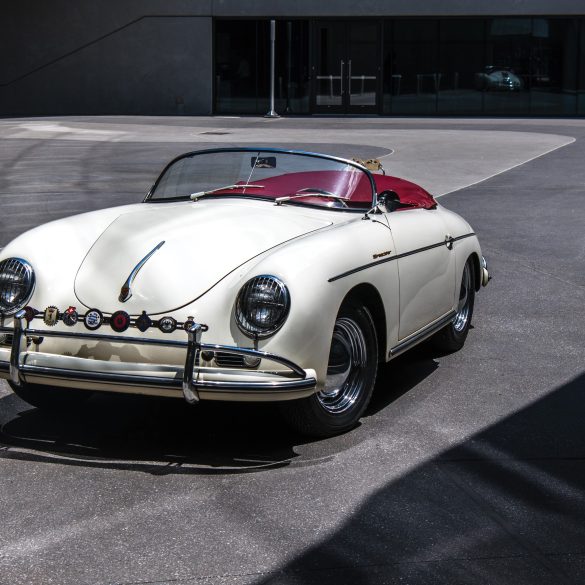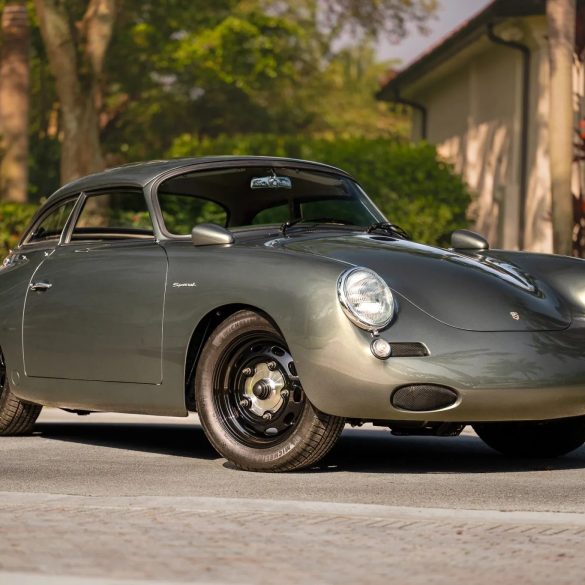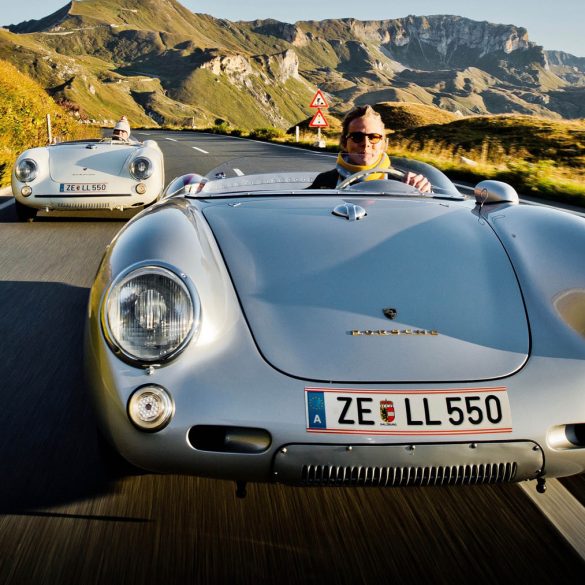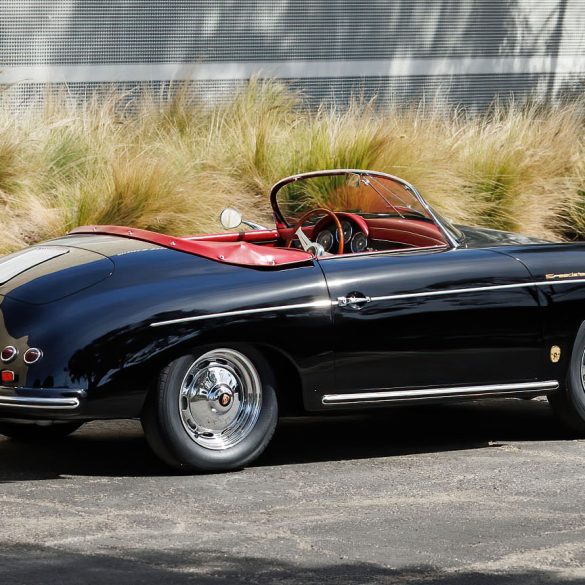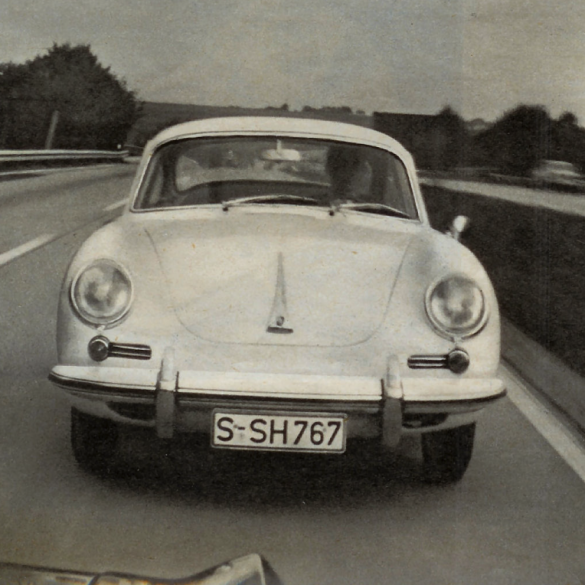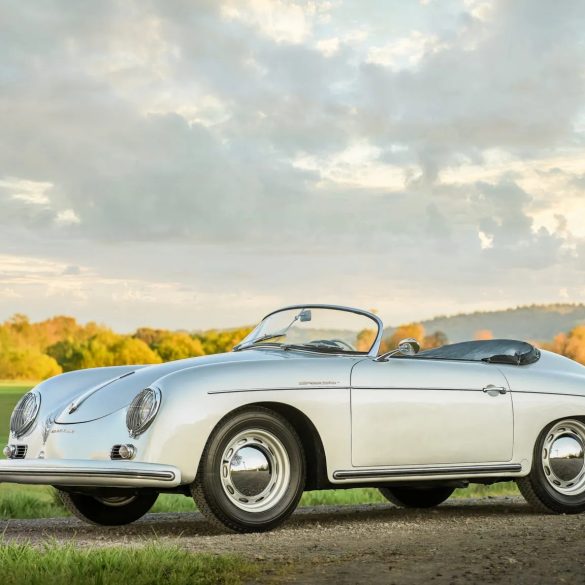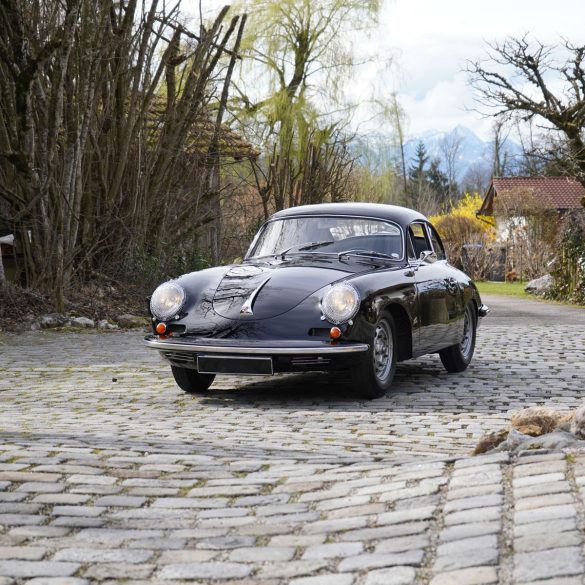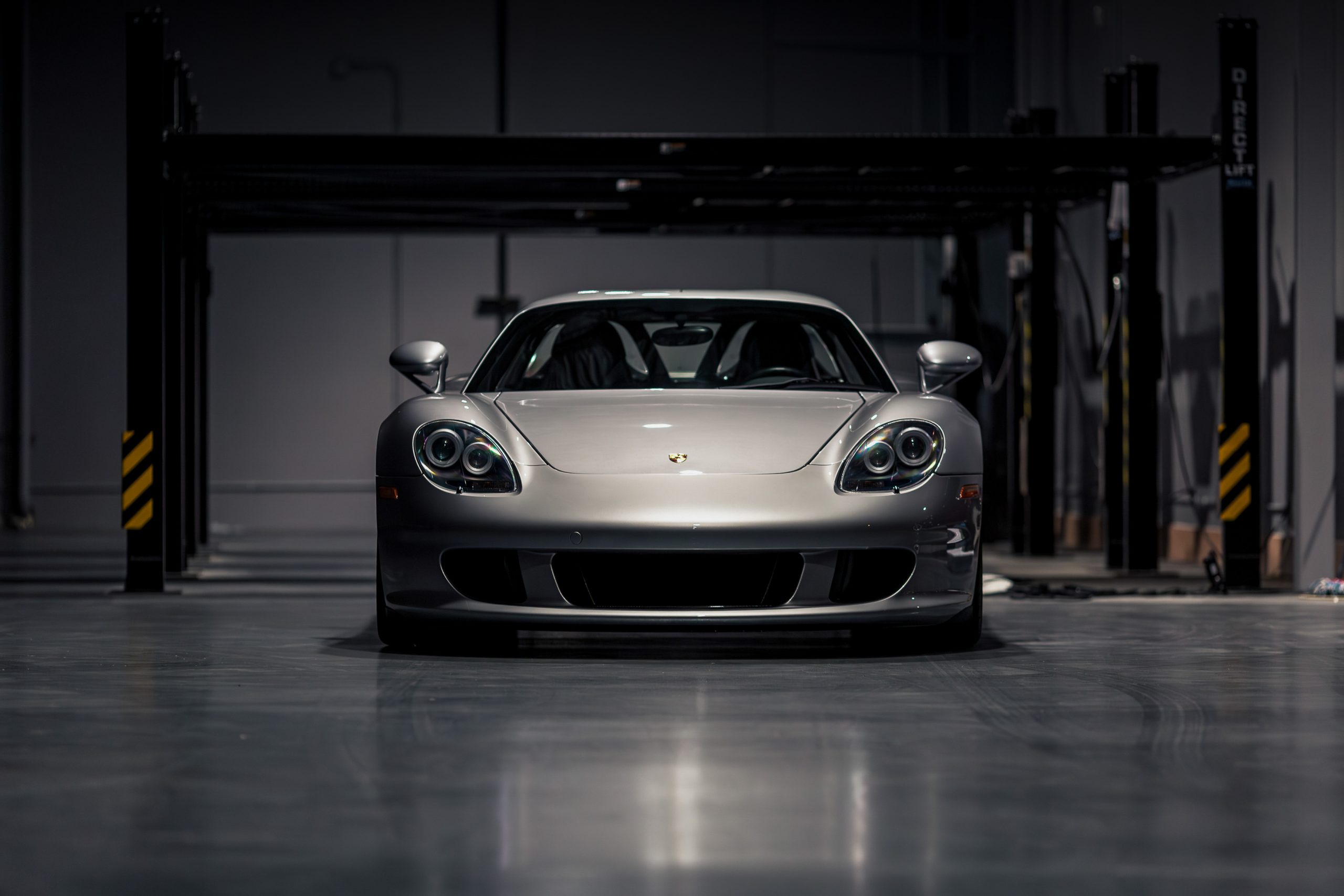Porsche 356 - The Ultimate Guide
Launched a Legend - Light, Nimble & Timelessly Cool
Full Story / Model Guides / Research & Data / Timeline & Evolution / Videos & Pics / FAQs / News
Porsche 356 Basics
Manufacturer: Porsche Konstruktionen (1948–1949) & Dr. Ing. h. c. F. Porsche (1950–1965)
Production Years: 1948–1965
Total Production: ~78,000 units
Designer: Erwin Komenda
Body Styles: 2-door coupé, 2-door convertible, 2-door roadster
Layout: Rear-engine, RWD
Wheelbase: 2,100 mm
Length: 3,870–4,010 mm
Width: 1,660 mm
Height: 1,220–1,320 mm
Curb weight: 771–1,041 kg
The Porsche 356 was the first production car from Porsche. Earlier cars designed by the company included Cisitalia Grand Prix race car, the Volkswagen Beetle, and Auto Union Grand Prix cars, but it was the 356 that changed things forever for sports car enthusiasts the world over. Ferdinand Porsche, Sr. founded the company that still bears his name, but it was his son Ferdinand, widely known as Ferry, who created the Porsche we know today. In the early years after World War II, Ferry designed the 356-the car that made Porsche famous.
Closely related to the Volkswagen Beetle, which Ferdinand Sr. had designed in the mid-1930s, the 356 utilized many VW components-primarily in its drive-line and suspension--as well as its rear-engine, rear-wheel-drive configuration. But what began as a close cousin, or perhaps offspring, of The People's Car soon evolved into a world-class sports car, as well as a regular race winner. The first production Porsche was also a smash sales success. Ferry had initially hoped to sell 500 examples and needed a couple of years to build the first 50, but by the time 356 production ended in 1965, more than 76,000 cars in four distinct series had been built.
Porsche moved from Zuffenhausen in Stuttgart to the Austrian town of Gmund during 1944. Porsche’s Zuffenhausen factory (acquired in 1938) was occupied by the Americans so another options had to be found to build cars. Porsche ended up creating a partnership with Reutter for 500 Coupe bodies and Porsche leased 5000 sq ft of Reutter’s warehouse space ti build the cars. Cabriolet bodies went to the Glaser company in Ullesricht. The first Porsche 356 completed in Stuttgart was finished in March 1950.
The 356 was built in generations. There was the original ("pre-A"), followed by the 356 A, 356 B, and finally the 356 C. To distinguish among the major revisions of the model, 356s are generally classified into a few major groups. The 356 coupés and "cabriolets" (soft-tops) built through 1955 are readily identifiable by their split (1948 to 1952) or bent (centre-creased, 1953 to 1955) windscreens. In late 1955 the 356 A appeared, with a curved windshield. The A was the first road going Porsche to offer the Carrera four-cam engine as an option. In late 1959 the T5 356 B appeared; followed by the redesigned T6 series 356 B in 1962. The final version was the 356 C.
Porsche 356 Model Timelines & Details
This graphic breaks out the Porsche 356 in terms of timelines and how to tell all the models apart. Click on the image to see it in higher definition. We have broken out the models by region, model, engine and even fuel injection type as well as transmissions available and anything else pertinent.
Porsche 356 Evolution Over The Years
The Porsche 356 evolved from a handmade, minimalist sports car to a polished, globally successful performance icon. Each generation improved upon the last in terms of power, handling, braking, and comfort, without ever losing the lightweight, rear-engine soul that defined the driving experience. Whether you're drawn to the purity of a Pre-A, the style of a Speedster, or the refinement of a late-model SC, the 356's legacy lives on as the cornerstone of the Porsche brand.
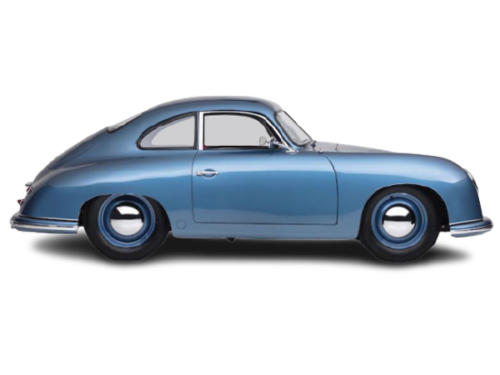
Porsche 356 "Pre-A" (1948–1955)
The original 356, often called the "Pre-A", debuted in 1948 and was Porsche’s first production car. Early examples were hand-built in Gmünd, Austria, with lightweight aluminum bodies—fewer than 50 of these cars were produced and are now among the most collectible Porsches in existence. In 1950, production moved to Zuffenhausen, Germany, where the bodies were now made of steel, allowing for greater scale and consistency.
These early cars featured a split or bent windshield, minimalist design, and power from Volkswagen-derived flat-four engines, initially producing around 40 horsepower. Over time, engine displacement and output increased, with later Pre-A models reaching up to 70 hp in the 1500 Super. While the Pre-A lacks many of the refinements of later models, its purity and simplicity give it a raw, elemental charm that appeals to purists and collectors alike.
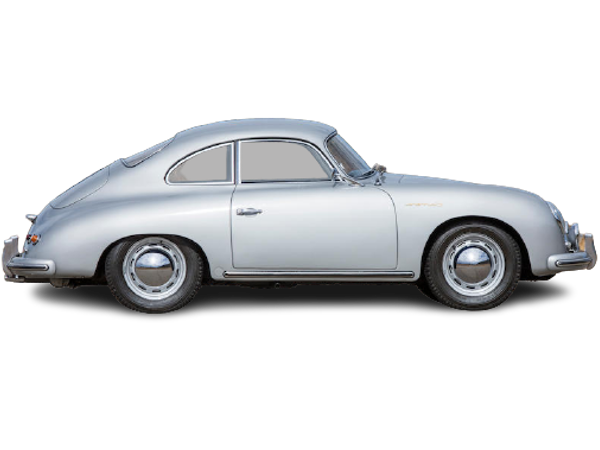
Porsche 356 A (1955–1959)
The 356 A marked the first major revision of the model and debuted in late 1955. Visually, it introduced a more modern curved windshield, smoother body lines, and improved build quality. It was also the first 356 to be offered with multiple engine options, including the 1600, 1600 S (Super), and the powerful Carrera 1500 GS four-cam variant—bringing performance into a new league.
Mechanically, the 356 A benefitted from chassis and suspension tweaks that made it more composed and enjoyable to drive. The model designation internally was referred to as the Type 1 or “T1”, with a mid-cycle update in 1957 introducing the T2 body, which featured small detail improvements and upgraded components. The 356 A era is also when the Speedster gained its cult following, with its stripped-down ethos and rakish windshield epitomizing West Coast car culture. These models blended usability with performance and marked Porsche’s move into more international recognition.
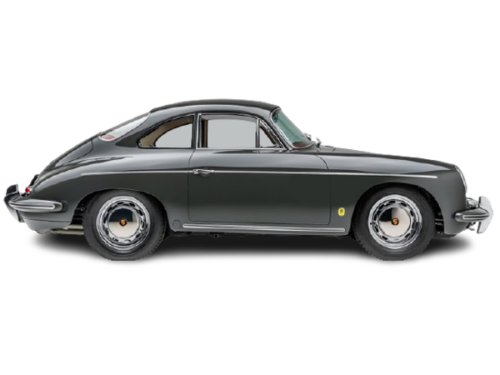
Porsche 356 B (1959–1963)
The 356 B arrived in late 1959 with more noticeable styling and structural changes. Initially designated as the T5 body, it featured higher-mounted bumpers with larger guards, a more prominent front hood handle, and revised interior appointments. Though not as aesthetically sleek as its predecessors, the 356 B was a more robust and refined car, aimed at expanding Porsche’s appeal in a growing global market.
In 1962, Porsche introduced the T6 body, which brought twin engine lid grilles, a larger rear window on coupes, and a new fuel filler location on the fender (rather than under the hood). Mechanically, the 356 B retained the proven 1600 and 1600 S engines but also introduced the high-performance Super 90, which offered more power and torque for spirited driving. The Carrera 2 GS, fitted with a 2.0-liter four-cam engine, also debuted during this period and remains one of the most sought-after 356s of all time. The 356 B bridged the gap between the early, spartan 356s and the more refined 911 era that would follow.
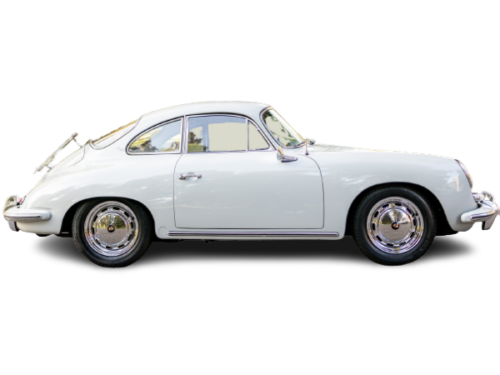
Porsche 356 C (1963–1965)
The final version of the 356, the 356 C, represents the peak of the model’s evolution. It retained much of the styling of the late 356 B T6, but introduced significant mechanical upgrades, most notably four-wheel disc brakes, which dramatically improved stopping power and modernized the driving experience. By now, the 356 had become a truly capable sports car by contemporary standards, still retaining its charm and light weight, but with improved safety and drivability.
Engine options included the base 1600 C (75 hp) and the top-of-the-line 1600 SC (95 hp), the most powerful pushrod engine Porsche had produced. Though the four-cam Carreras were still available, they were exceedingly rare and expensive. The 356 C also marked the end of the line, as Porsche was preparing the market for the all-new 911, which launched in 1964. Production of the 356 continued through 1965 alongside the early 911, with the final examples often being the most refined and usable.
The Porsche 356 Data Treasure Trove - Data, Specs, Documents, Research, Drawings, Sales Brochures & Much More More.
Dive into The Porsche 356 Treasure Trove, a comprehensive archive packed with detailed specifications, production data, factory documents, engineering drawings, sales brochures, research materials, and much more, offering an in-depth look at this iconic Porsche.
Porsche 356 Pictures, Galleries & Wallpapers
For those who want to see the Porsche 356 in all its glory, our Porsche 356 Pictures, Galleries & Wallpapers section features a stunning collection of high-quality images, including factory photos, rare color options, historical advertisements, and downloadable wallpapers for enthusiasts.
Porsche 356 Videos
Experience and enjoy the fabulous Porsche 356 in these fun videos we curated from across the internet.
Porsche 356 FAQs
The most frequently asked questions from readers about the Porsche 356.
How much is a Porsche 356?
Porsche 356 Pricing Overview & Trends
Current Price Ranges by Variant
General listings: Values span from around $33,000 for project cars or high-mileage examples to upwards of $570,000 for pristine, rare models, with an average price near $162,000. National marketplace stats: The average Porsche 356 across platforms in the U.S. sits between $139,000–$158,000, with entry-level examples starting at approximately $36,500. The Porsche 356 market remains vibrant—with classic models like the Speedster and Carrera drawing top prices. Overall, values have been steadily rising and continue to benefit from the desire for timeless, driving-centric vintage Porsches.
Market Trends & Insight
Appreciation over time: In the U.K., Porsche 356 values have climbed roughly 60% over four years, including a 10% increase in the past year—though a slight dip (~6%) was seen in the most recent six months. Growing demand: The vintage car market continues to heat up. With increasing scarcity and cultural interest in classic internal-combustion sports cars, demand for models like the 356 remains strong. Future outlook: Some enthusiasts suggest that while the 356 will remain collectible, its value growth may eventually plateau as generational tastes shift toward later models like the early 911.
How much horsepower does a 356 Porsche have?
The horsepower of a Porsche 356 varies widely depending on the model and year. Here's a breakdown across key variants:
Horsepower by Model:
356 (Pre-A, 1948–1955): Early 1100 & 1300cc engines had 40–44 hp, while 1500cc versions had up to 60 hp
356 A (1955–1959): 1600 (standard) 60 hp, 1600 S (Super) 75 hp, 1500 GS Carrera 100 hp
356 B (1959–1963): 1600 60 hp, 1600 S 75–90 hp, 2000 GS Carrera 2 130 hp (four-cam)
356 C (1963–1965): 1600 C 75 hp, 1600 SC 95 hp (most powerful pushrod engine)
Key Notes:
The Carrera models with four-cam engines (like the GS and GT) were significantly more powerful and rarer than the standard models. The 356 SC from 1964–1965 had the highest horsepower of any pushrod engine-equipped 356, at 95 hp. Even the lowest-powered 356 models are known more for balance and driving feel than outright performance.
How fast does a Porsche 356 accelerate from 0 to 60?
Typical 0–60 mph Times:
Early 356 (Pre-A, 1948–1955): ~19–23 seconds. These early models had as little as 40–60 hp and were not built for outright speed.
356 A (1955–1959):
1600: ~16–18 seconds
1600 Super: ~13–15 seconds
1500 GS Carrera: ~10–11 seconds
356 B (1959–1963):
1600: ~15–17 seconds
1600 Super 90: ~12–13 seconds
2000 GS Carrera 2: ~9–10 seconds
356 C (1963–1965):
1600 C: ~13–15 seconds
1600 SC: ~10–11 seconds
Fastest 356s
The Carrera 2 GS with its 2.0L four-cam engine was the quickest production 356, hitting 0–60 mph in just under 9 seconds in period tests. The 356 SC (95 hp) was the quickest non-Carrera pushrod car, doing 0–60 in around 10–11 seconds.
What is the best year for a Porsche 356?
The "best year" for a Porsche 356 depends on what you're looking for—collector value, driving enjoyment, or originality. Here’s a breakdown of standout years and why they matter:
1964–1965: Porsche 356C / 356 SC
Why it’s the best all-around choice: The final and most refined 356 generation. Features disc brakes all around—greatly improving safety and drivability. The SC model had the most powerful pushrod engine (95 hp). Excellent parts availability and mechanical reliability. Ideal for buyers who want a vintage Porsche that’s still usable in modern traffic.
1958–1959: Porsche 356A T2 & Speedster models
Why enthusiasts love it: The T2 update brought mechanical and structural improvements. 1958 Speedster is an icon: minimal, beautiful, and collectible. Raw, engaging driving experience.
1962: Porsche 356B T6 Coupe & Carrera 2 GS
Why collectors love it: The T6 body featured twin engine grilles, a larger rear window, and improved handling. The rare Carrera 2 GS had a 2.0L four-cam engine and is one of the most valuable and exotic 356s ever made. Represents peak performance for non-911-era Porsches.
1955: Porsche 356 Pre-A Speedster & Continental
Why it’s historically significant: 1955 was the last year of the “Pre-A” cars. Early Speedsters and Continentals from this year are highly sought-after, with values often exceeding $400K+. Distinctive “bent windshield” design on Speedsters.
Bottom line:
For driving, go with 1964–65 SC or C. For investment & history, seek out 1955–58 Speedsters or 1962 Carrera 2 GS.
Why are some Porsche 356s so cheap and others so expensive?
The wide price range of Porsche 356s—from around $30,000 to over $800,000—comes down to a few key factors: model variant, condition, originality, provenance, rarity, and market demand. Here's why some are cheap and others extremely expensive:
Model Variant & Engine Type
Base Coupes (like early 356 A or B models with 60–75 hp pushrod engines) are the most common and affordable. Carrera models (GS, GT, Carrera 2) feature rare and exotic four-cam "Fuhrmann" engines, which are complex and incredibly valuable—making them top-tier collector cars. Speedsters, Roadsters, and Convertible Ds are highly sought after for their styling and limited production, which drives prices up. Example: A standard 356 B coupe may sell for $70K, while a 356 A Speedster or Carrera 2 GS can easily exceed $400K–$600K.
Condition & Restoration Quality
A project car with rust, missing parts, or poor restoration can be relatively cheap (under $50K). A fully restored example, especially done to concours standards with correct parts and finishes, can fetch many times more. Cars with original paint and patina also command strong prices if preserved properly. Rule of thumb: Bad bodywork, rust repairs, or incorrect parts can drastically reduce value—even on a desirable variant.
Originality & Documentation
Matching-numbers engine, transmission, chassis, and proper factory options can significantly boost value. Cars with documented ownership history, service records, and factory build sheets are worth more. “Outlaw” or modified 356s are often fun and cheaper, but not as valuable to collectors. Example: Two identical 356 SC coupes may differ by $50K+ in value based solely on originality and documentation.
Rarity & Historical Significance
Some models had very limited production (e.g. Carrera Speedsters, early Gmünd-built cars). Special-order models, racing history, or celebrity ownership can add huge premiums. A 356 built at Gmünd in Austria in 1950 is a million-dollar car. A 1964 driver-grade C coupe? Maybe $70K–$90K.
Market Trends & Enthusiast Demand
Speedsters and Carreras are iconic, forever tied to Porsche's early racing and California car culture. Early “Pre-A” models are rising as collectors seek ultra-early production numbers. Meanwhile, base coupe values may stay relatively flat, especially for less desirable color combinations or non-matching engines.
Bottom line
Some Porsche 356s are "cheap" because they’re common, need work, or have lost originality. Others are "expensive" because they’re rare, historically important, beautifully restored—or all three. Let me know if you want help identifying which 356 is the best fit for your budget or collecting goals.
How many 356s were made?
Porsche produced a total of approximately 76,313 units of the 356 between 1948 and 1965. Here's how that breaks down by generation:
Porsche 356 Production Numbers by Series:
356 (Pre-A) (1948–1955): ~7,627
356 A (1955–1959): ~21,045
356 B (1959–1963): ~30,963
356 C (1963–1965): ~16,678
Total: ~76,313
Additional Notes:
The very first 50 cars (1948–1950) were hand-built in Gmünd, Austria, using aluminum bodies. These early cars are ultra-rare and incredibly valuable. Production moved to Zuffenhausen, Germany starting in 1950, where steel-bodied cars were built.
Most 356s were coupes, but open-top versions like the Speedster, Cabriolet, Roadster, and Convertible D make up a significant and more collectible portion.
Porsche also made a few hundred 356 Carrera models with four-cam racing engines, adding rarity and value.
Summary: Porsche made about 76,000 examples of the 356—an impressive number for a small manufacturer at the time—but today, surviving examples (especially unrestored or matching-numbers cars) are far rarer. Let me know if you’d like a breakdown by body style or Carrera-specific figures.
What is the Porsche 356 so iconic?
The Porsche 356 is iconic because it represents the very beginning of the Porsche story—a car that captured the essence of what the brand would become: lightweight, nimble, mechanically pure, and deeply rewarding to drive. Introduced in 1948, it was the brainchild of Ferry Porsche, who sought to create a sports car that could offer exceptional performance and handling through engineering finesse rather than brute power. With its compact, rear-engine layout and streamlined, curvaceous bodywork, the 356 stood apart from the large, heavy cars of the post-war era. It wasn't just fast for its size—it was agile, balanced, and accessible in a way that redefined what a sports car could be.
Beyond its design and engineering, the 356 quickly proved itself in motorsport. It was raced by privateers and factory teams alike, winning its class at the 24 Hours of Le Mans, the Mille Miglia, and countless hill climbs and rallies around the world. These victories didn’t just add to its reputation—they made it a symbol of performance achieved through clever design and precision rather than excess. This spirit of underdog success helped establish Porsche as a serious performance brand, despite its small size and relatively low horsepower output at the time.
The cultural impact of the 356 also played a major role in its iconic status. In the United States, it became a fixture of 1950s and '60s car culture—particularly in California, where the Speedster variant, with its low windshield and stripped-down design, became synonymous with West Coast cool. Celebrities like James Dean, Steve McQueen, and Janis Joplin owned 356s, helping to cement its image as a car for those who appreciated style, individuality, and driving passion. These associations helped elevate the 356 from mere car to cultural artifact.
Even today, the Porsche 356 endures not just as a collectible but as a driving experience. It remains mechanically straightforward, relatively easy to maintain, and supported by a strong global community of owners and restorers. Whether preserved in original condition or carefully restored, each example tells a story of craftsmanship and innovation. For many enthusiasts, it’s not just a classic Porsche—it’s the soul of the brand, the blueprint for the 911, and the genesis of everything that followed. That’s why the Porsche 356 is more than just iconic—it’s foundational.
Which Porsche 356 variants are most special?
Among the many Porsche 356 variants produced between 1948 and 1965, a few stand out as particularly special—either for their rarity, performance, historical importance, or cultural cachet. These are the 356s that collectors revere, enthusiasts dream about, and historians point to as milestones in the Porsche legacy.
Arguably the most iconic of all 356 variants is the 356 Speedster, introduced in 1954 at the request of U.S. importer Max Hoffman. The Speedster featured a low, raked windshield, minimalist interior, and removable side curtains—all in the name of lightweight performance and affordability. It was a pure driver’s car and quickly became a favorite in Southern California’s sports car scene. Today, the Speedster—especially in 356 A form from 1957–1958—is one of the most desirable and valuable Porsche models ever built. Its combination of timeless styling, driving purity, and pop culture presence (James Dean famously drove one) make it a cornerstone of Porsche mythology.
Even more exclusive are the Carrera models, particularly those equipped with the legendary four-cam "Fuhrmann" engines. These high-performance engines were originally developed for racing and featured complex internals that delivered significantly more power and a thrilling, high-revving character. The 356 A 1500 GS Carrera, the later 356 B Carrera 2 GS, and especially the 356 B Carrera GT and C Carrera 2 (with a 2.0-liter four-cam engine) represent the pinnacle of factory performance during the model’s run. These cars were as close to a race car for the road as Porsche offered at the time, and their values reflect their rarity and engineering excellence.
Other noteworthy variants include the early Gmünd-built cars (1948–1950), hand-assembled in Austria with aluminum bodies. Fewer than 50 of these were made, making them exceptionally rare and historically significant—they are the first true Porsches. Additionally, the Convertible D (1959) and Roadster models are special as transitional open-top variants that retained some of the Speedster's simplicity while offering more creature comforts and better usability.
The 356 SC (1964–1965), while not rare, is also held in high regard. As the final and most refined version of the 356 before the 911 took over, the SC featured disc brakes and a 95-horsepower pushrod engine—the most powerful of its kind. It represents the peak of 356 development and is considered one of the best-driving variants.
In summary, the most special Porsche 356s include the Speedster, the Carrera four-cam cars, the early Gmünd models, and the final SC and C variants. Each brings something unique to the table—be it purity, performance, heritage, or innovation—and together, they define why the 356 remains one of the most iconic and beloved sports cars ever made.
Join Our Porsche Community
Sign up for our weekly Porsche newsletter. The latest Porsche news, rumors, reviews and more delivered to your inbox. Cool Porsche stuff perfect for the flat-six obsessed.


